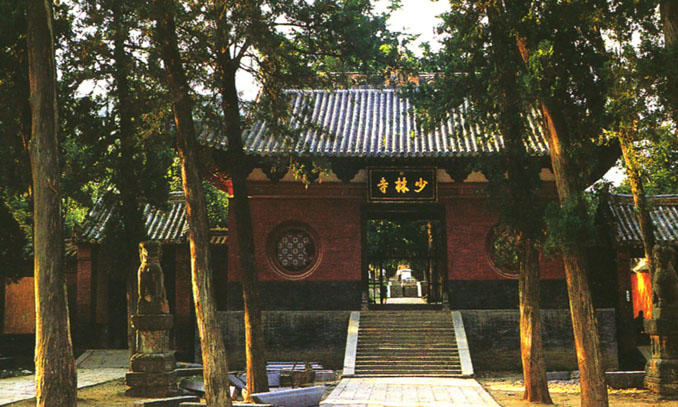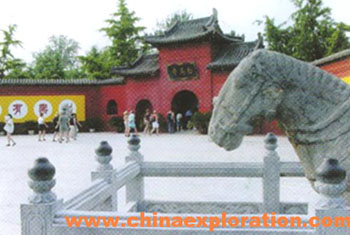search for a Trip
Introduction of Luoyang
 Luoyang is a small city, 25 kilometers to the south of the Yellow River, and is well known in China as “ The Capital of Nine Dynasties “ on and off from the Eastern Zhou (770 BC) to the later Tang Dynasty (923-936 AD). The city as you see it today is not quite what it was in the heady days of its youth and the majority of the best sights now are those that the past has left behind. It is, however, at the moment, not overly plagued by tourists, so that the many sights here can still be enjoyed in relative peace and quiet.
Luoyang is a small city, 25 kilometers to the south of the Yellow River, and is well known in China as “ The Capital of Nine Dynasties “ on and off from the Eastern Zhou (770 BC) to the later Tang Dynasty (923-936 AD). The city as you see it today is not quite what it was in the heady days of its youth and the majority of the best sights now are those that the past has left behind. It is, however, at the moment, not overly plagued by tourists, so that the many sights here can still be enjoyed in relative peace and quiet.
Main Attractions in Luoyang
Longmen Grottoes
The Longmen Grottoes are located along the banks of the Yishui River 13 kilometers south of Luoyang proper. Carved in ancient China and stretching some 1 km, it is one of the three most famous grottoes in China, together with the Dunhuang Grottoes in Gansu Province, and the Yungang Grottoes in Shanxi province, and a major national scenic spot. The work began during the reign of emperor Taihe of the Northern Wei period( 535-556) and lasted for 400 years. There are 1,952 grottoes, 750 niches, 40 pagodas, and more than 100,000 Buddhist statues, big or small . The most well-known caves are Guyang, Binyang, yaofang, and Wanfo ( Ten-Thousand- Buddha ) The largest Buddhist statue, 17 meters high, is found in Fengxian Temple.

Forest of Guan Yu
The Forest of Guanyu, seven kms south of Luoyang, is where Guan Yu, a famous general of Three Kingdom period ( 220-280 ) , was buried. It was first built in the Tang Dynasty and was renovated during the Ming and Qing Dynasties ( 1368-1911) , with 150 halls, 70 stones carvings, 110 stone caved lions, and 800 ancient cypresses. The tomb of Guan Yu is 10 meters high, surrounded by octagonal red wall.
White Horse Temple
The White Horse Temple, 12 kms east of downtown Luoyang, was the first temple build in 68 A.D., the 11th year during the reign of Emperor Yongping of the Eastern Han Dynasty ( 25-220 ) after the introduction of Buddhism to China. As legend has it, the Buddhist scriptures were carried by a white horse, hence the name. Covering an area of 40, 000 square meters , the temple has Qiyun Pagoda erected in the Jin Dynasty ( 1115-1234) , a pair of sculptured white horses, the tombs of eminent monks from India, pagodas to enshrine Buddhist sutras, stone tablets carved in the Yun and Ming dynasties ( 1271-1644 ) , and bell tower, On New Year’s eve, the bell in the temple chimes to welcome the New Year.
Shaolin Temple
Lying at the northern foot of Shaoshi, Shaolin temple was built in 495, the 19th year during the reign of emperor Taihe of the North Wei period. It is the birthplace of the Zen Buddhism in China. The temple is famous worldwide for Shaolin Kongfu, or Chinese martial arts. In the Thousand-Buddha Hall, the famous mural painting of 500 arhats can be found in a 300-square-meter area.
Climate in Luoyang
Luoyang has very typical weather for central China, characterized by distinct seasons. Autumn is the most comfortable time here, with sunny days and modest temperatures and spring is particularly pleasant when the famous Peonies begin to blossom in April and May.
| Month |
Jan |
Feb |
Mar |
Apr |
May |
Jun |
Jul |
Aug |
Sep |
Oct |
Nov |
Dec |
|
Temperature (Celsius) |
2.3 |
2.7 |
8.6 |
15.4 |
21.3 |
26.5 |
27.5 |
26.2 |
21.2 |
15.3 |
8.3 |
2.7 |
Click to see luoyang tours
China Attractions Guide
- Anhui Attractions
- Beijing Attractions
- Chongqing Attractions
- Fujian Attractions
- Gansu Attractions
- Guangdong Attractions
- Guangxi Attractions
- Guizhou Attractions
- Hainan Attractions
- Henan Attractions
- Hongkong Attractions
- Hubei Attractions
- Hunan Attractions
- Inner Mongolia Attractions
- Jiangsu Attractions
- Jiangxi Attractions
- Manchuria Attractions
- Ningxia Attractions
- Qinghai Attractions
- Shaanxi Attractions


